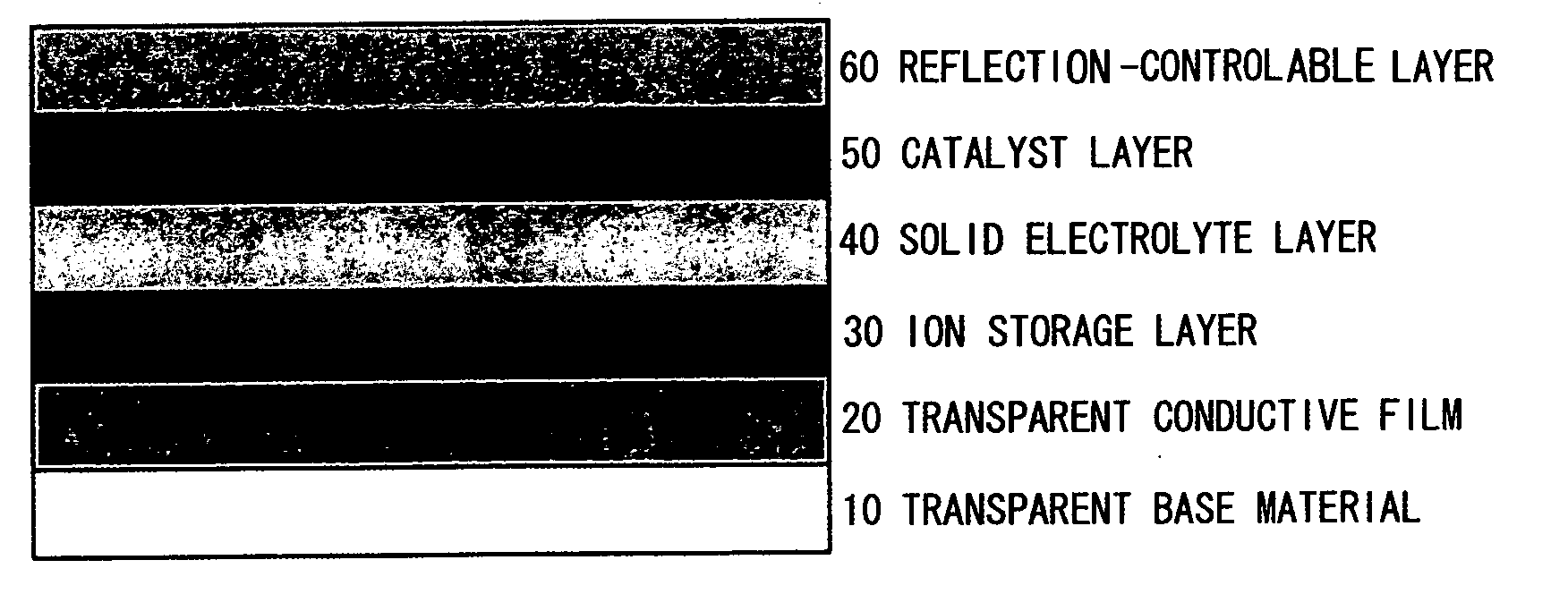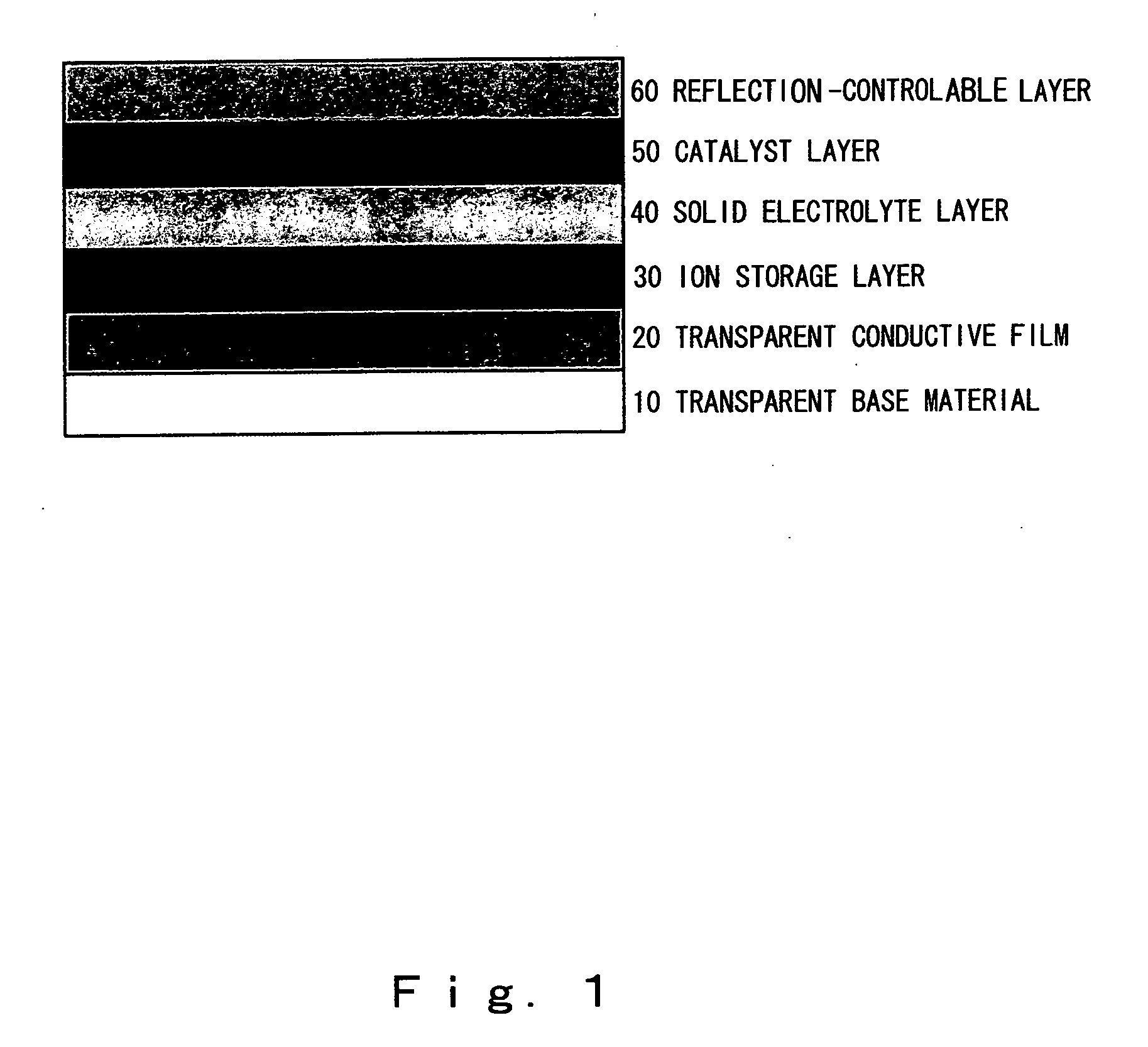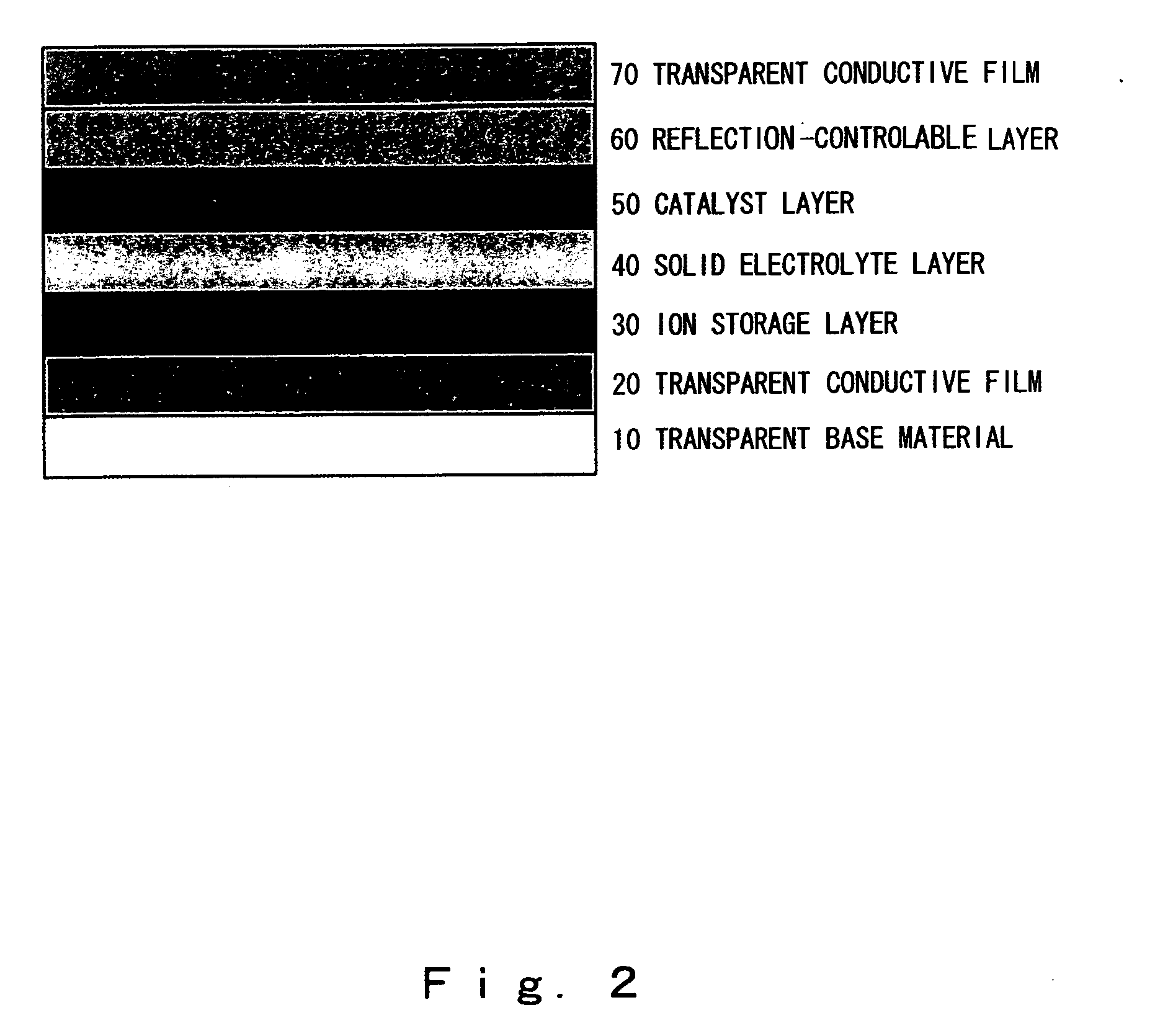All-solid-state reflection-controlable electrochromic device and optical switchable component using it
- Summary
- Abstract
- Description
- Claims
- Application Information
AI Technical Summary
Benefits of technology
Problems solved by technology
Method used
Image
Examples
example 1
[0097] First, an explanation of a first layer structure of the present invention is provided with reference to FIG. 1. In the present example, the all-solid-state reflection-controlable electrochromic device shown in FIG. 1 was used. Although the following provides an explanation of a process procedure with respect to an embodiment of a production process, the technical scope of the present invention is not limited to the following procedure. An electrochromic device can be produced by, for example, forming a transparent conductive film, a reflection-controlable layer and a catalyst layer on a first base material, followed by forming a transparent conductive film, an ion storage layer and a solid electrolyte layer on a second base material, and then laminating the base materials.
[0098] A glass plate having a surface resistance of 10 Ω / □ and thickness of 1 mm and coated with a transparent conductive film in the form of tin-doped indium oxide was used as a substrate. After rinsing, t...
example 2
[0104] The resulting multilayer film was mounted in an evaluation system as shown in FIG. 6 to investigate the optical switching characteristics thereof. A voltage of ±5 V was applied between the tin-doped indium oxide and the indium, and the change in optical transmissivity was measured with a measurement system combining a semiconductor laser having a wavelength of 670 nm and a silicon photodiode.
[0105] Since the reflection-controlable layer has a shiny metallic surface, the as-deposited multilayer film reflects light well (optical reflectance: up to 28%), and since the ion storage layer in the form of a tungsten oxide thin film has a deep blue color, the transmissivity is extremely low (optical transmittance: up to 0.1%). When a −5 V voltage was applied to the indium electrode side of this multilayer film, the protons in the tungsten oxide thin film are released due to electric field effects, are transferred through the solid electrolyte layer, and then are introduced into the m...
PUM
 Login to View More
Login to View More Abstract
Description
Claims
Application Information
 Login to View More
Login to View More - R&D Engineer
- R&D Manager
- IP Professional
- Industry Leading Data Capabilities
- Powerful AI technology
- Patent DNA Extraction
Browse by: Latest US Patents, China's latest patents, Technical Efficacy Thesaurus, Application Domain, Technology Topic, Popular Technical Reports.
© 2024 PatSnap. All rights reserved.Legal|Privacy policy|Modern Slavery Act Transparency Statement|Sitemap|About US| Contact US: help@patsnap.com










